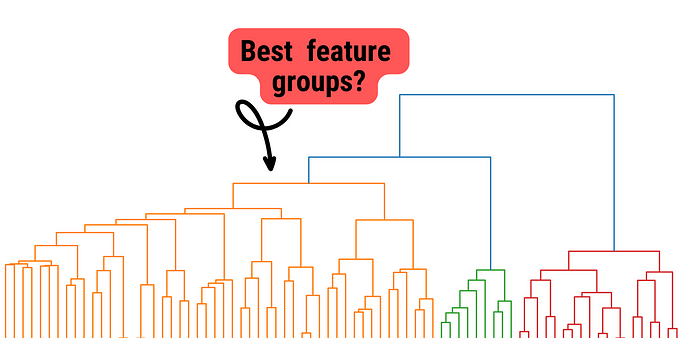Empirical Feng Shui
Dwelling as a Behavioral Science
Sheltering has plowed much pent up energy into improving our nests. Most have heard of the Chinese art of Feng Shui, whose stated aim is to “harmonize individuals with their surroundings.” What a worthy ambition! By all means, let’s seek scientific principles to design more vital, congenial, inspiring dwellings! I propose we refactor Feng Shui to become an empirically tested body of principles. Much is already known about humane habitats, often derived from the recognizable charisma of enchanting zen gardens, mosques, and temples, as well as lovely homes and cabins. Architecture recently hooked up with Evidence-Based Design. Twentieth-century architecture was blighted by modernist high priests who claimed buildings were ‘machines for living.’ The factory orientation ignored even the rudimentary science of man-machine interactions.
Exceptions include Bay Area architects in the ’90s, notably Julia Morgan and Ben Maybeck, who built temples to humane living. They provide exemplary lessons in adapting a structure to both the building’s locale and to the particular personal needs of the building’s residents. Interviews and direct observations of each family guided their designs. San Francisco’s Palace of Fine Arts, as well as the First Church of Berkeley, evoke such harmonious beauty that anyone who has seen one will always remember their eldritch, Hobbit-like vibe.
Pattern Languages as an Inspirational Font
In the ’60s, one lone genius cataloged his idiosyncratic collection of good experiences that architecture should strive to embody. Christopher Alexander’s A Pattern Language derives gnomic principles, proved with examples and instances that shared some mystical underlying pattern. Alexander’s personal table of patterns is explicitly idiosyncratic, including elements such as “person sleeping in public,” or “dancing in the streets” as some sort of archetypical form that exists outside of time and takes shape in many different places. His sacred text has inspired some computer scientists, philosophers, and biologists to inherit the language of patterns for their own disparate disciplines. The intuition is compelling. A pattern could be defined as a cluster of characteristics that, in combination, transform a space to deliver a vital humane resonance between occupants and their environment.
From Folk Knowledge to testable Hypotheses
Experimental psychologists take a magpie’s approach to deriving hypotheses: There’s no idea so crazy that we should reject it outright, so long as we find a way to test the claim against experience. The Great Indoors: The Surprising Science of How Buildings Shape Our Behavior, Health, and Happiness has just come out by Emily Anthes. She presents an evidence-based design approach to our “built environment.” Much of this post was sparked by her synthesis of how data, and empirically minded design methods, have begun to impact architectural thinking. At present, the field resembles the era of human-computer interaction when they focused on ergonomics (worker efficiency within the limitations of our sensory channel’s bandwidth, resolution, and body type). Humans, of course, play as well as work. Tools originally designed for utility and efficiency inevitably ascend into the realm of psychological needs, preferences, and symbolism. In short, everything aspires to become fashionable.
Psychophysics of Sound & Light
What could behavioral scientists contribute to creating healthy invigorating environments? The psychophysical dimensions of sound and lighting are well-studied. Noise, to no one’s surprise, is a major stressor. Excessive sound negatively impacts cognitive function, fatigue, mood, and even our immune response. While we may close our eyes to avoid distressing stimuli, ears don’t come with lids, and thus they’re always on. The lucky ones own noise-canceling headphones, the best of which is Apple’s AirPods Pro. Not everyone can tap their credit card for three Benjamins to be wafted into a quieter space. Less expensive modifications needn’t require advanced digital signal processing. Rugs on the floor, textile wall coverings, and soft pillows absorb and muffle sound. Hearing-protective ear muffs, which sell for under $20, block out about 30 decibels. They fit comfortably on top of earbuds, so you can simultaneously listen to music or podcasts. White noise, which contains equal amounts of all audible frequencies, also helps. Small machines, as well as many apps, generate a range of shushing options (rainfall, forest chirps, river roars) to soften the jagged edges of background noise. A NYT reporter pointed out that ‘noise cancellation’ may be impossible, but noise control still provides a health benefit.
Lighting is another fundamental aspect of our living spaces that’s controllable. I myself have not tried to sift out the science from the blue woo here. My practice is simple: Soak in sunlight where possible, and use full-spectrum lights when inside. Sunlight has abundant healthy effects. Our bodies need it in order to synthesize vitamin D. Radiolab recently examined why America’s homeless population has had an unexpectedly low incidence of severe COVID reactions. The podcast discussed the possible explanation that it’s connected to their high vitamin D synthesis due to long exposure to outdoor sunlight.
Behavioral Armature as Soft infrastructure
“Soft infrastructure” is Emily Anthes’ term for the behavioral supports and affordances that add guidance to nudge people toward desirable paths of movement. For the remainder of this post, let’s get soft.
The design of habitats for neurodiverse people demonstrate how “cognitive curb cuts” encourage vitality. IDEO was the original champion for studying “extreme populations” (e.g., interviewing lion tamers to provide clues for a pet food company). Sidewalk curb cuts, originally introduced in 1970’s downtown Berkeley for accessibility, are now widely assumed to have been placed for bicyclists and skateboarders. Adaptive design has now been recognized to have spillover benefits. To flip this on its head, keep in mind that inability/disability are, as a matter of fact, designed into a structure. No pre-ordained arrangement of atoms is normative, and it’s an oversight to require some post-hoc band-aid to provide accommodation A building’s design creates, and therefore is the cause of, barriers that we subconsciously attribute to individuals. We may assume their inability to flourish is a fact about them, rather than about the designed structure. My world’s been rocked by Sara Hendren’s “What Can a Body Do? How we meet the built world.” Her new book incisively covers the foundations of Disability Studies from a design perspective.
Let’s draw one example from the Great Indoors to demonstrate how we might architect for a special population’s needs. Nursing homes have emphasized ease and comfort as their primary objectives. This may seem accommodating, but Anthes points to the result of these design choices. The sleep-inducing environment looks bland and impersonal. Indeed, the absence of interesting details contributes to cognitive decline. Novel approaches explicitly incorporate challenges to enrich the residents’ daily life. Active Design guidelines lay out the importance of incorporating provocations to engage occupants in moving their bodies and maintaining their strength. This is a reaction to maximizing comfort and convenience. We are on the cusp of falling into the Wall-e Valley, puttering about on self-driving e-scooters with an endless supply of snacks at hand.

Spaces Designed to Nurture Active Habits
How might we design for more active homes? BJ Fogg, the godfather of Stanford-spawned apps like Snapchat & Instagram, trains students to scrupulously consider the ‘trigger’ for desired behaviors. As an example, placing a yoga mat on the path to your refrigerator might physically remind you to stretch before snacking. The dogma of social psychology is that situational modifications elicit far more downward dog behaviors than any guilt-trip ever could. Fogg has also researched the power of Tiny Habits. This approach emphasizes whittling behaviors down the smallest possible increment. Start with just one downward dog on the way to the fridge. See where that single nudge takes you.
Tapping into Ritualization for Deeper Resonance
Some triggers are structurally self-evident (like the yoga mat). Yet, by virtue of ritualizing a behavior, we tap into the inexhaustible power of our imagination, to make connections between symbols and sequences of steps. Two pen strokes, juxtaposed to form a cross, manages to invoke an entire tradition of religious connections, built up over millennia. Ritualized behavior can transform mundane, repetitive actions into comforting and meaningful experiences. Rituals have been characterized as “patterned, repeated ways through which we enact the moral emotions of compassion, gratitude, awe, bliss, empathy, ecstasy, that have been shaped by our hominid evolution and built up into the fabric of our culture” (from Casper Ter Kuile’s The Power of Ritual: Turning Everyday Activities into Soulful Practices). The Power of Ritual shifts much attention from traditional religious practices toward parallels more familiar and accessible in our secular age. If you have a workout routine, or personally know others who do, you’ll likely recognize the zealous evangelism unleashed through CrossFit, SoulCycle, or diverse yoga schools. Communally sharing experiences amplifies a habit’s hook. COVID derailed my Bar Method habit, and only gradually have I cobbled together substitute exercises.
We face an epidemic of Social Scurvy right now, as we’re not getting enough exposure to vitamin Community.
So how will we transform our solitary dwellings to invite greater connection to big picture emotions like gratitude, empathy, or awe? When ambulances were blaring constantly, New Yorkers spontaneously invented the 7 pm clangor to recognize health workers. In your own home, you might experiment with transitions to demarcate your entrance or exit from a particular activity. Most of us inessential workers have watched the blob of conference calls, email chains, and Slack channels spill into all the little cracks. Those cracks are where the light is supposed to shine in. Some have adopted a ritualistic walk around the block as a signal that they are about to begin or end their workday. Another behavioral hack that feels surprisingly good is a “secular sabbath.” Try out a day of stepping away from the pixelated digital stream, if only to run a modest control condition during this mass-scale social experiment of marinading the entire population with non-stop digital stimulation. Gratitude exercises are one of the most provably beneficial practices taught in popular college courses on Happiness. To structurally build in such healthful habits, little touches can devote a zone of space, or just a picture on a wall, to serve as a call to engage in your ritualized activity. Regularity is also an entrance to ritualization, so you might “travel” during the quarantine with repeated “Subtitled Sundays” that grant a weekly window into the world beyond our hobbled passports through cinema.
Love Your Mother, Nature
Let me close by shifting our gaze beyond the “Great Indoors.” Hiking, gardening, and a surge in pet adoptions have all fed our need to reconnect with our first Mother, Nature. A renowned Harvard entomologist wrote an entire book on the phenomenon of Biophilia. Biophilia underlies the emotionally and cognitively soothing boost we derive in the presence of nature: green grass and forests, running water, and animals draw upon a well of primal emotions. If we are indeed suffering from Nature Deficiency Disorder, a number of ways can redress this lack. Simply bringing a plant into your home introduces esthetic and emotional improvements. Going beyond that first baby step, a window box or a small patch of soil offers opportunities to nurture and care for something beyond your newsfeed. One classic psychological study began by placing plants in every room of a nursing home. Those who took care of their own living plant experienced real health benefits.
At this strange time, our shelter may leave us feeling cut off from the refreshing waters of familiar patterns. Evidence-based design can point us toward a renewed appreciation of our bodies’ wondrous nature. Our dwellings must be designed with attention to both our physiological and psychological needs. Perhaps you’ve felt like Major Tom, the isolated astronaut in David Bowie’s Space Oddity, ‘sitting in a tin can, far above the world.” NASA consulted the human-centered designer, Raymond Loewy. He was tasked with making the Apollo space capsule more humane, in spite of its overwhelming technical complexity. Loewy sought a way to integrate the work with something deeply nurturing. According to the astronauts, the element he added made all the difference. What was that special touch? A window, from which they could look out to see Home.
Let’s use this time to embed glimpses of our own fundamental human nature into our shelters. Control, even when you cannot cancel, excess noise. Let the sunshine in whenever you can. Move away from a numbing pursuit of comfort, to reimagine your home as a repurposed yoga studio, gymnasium, and ballroom. Our biological vulnerability was exposed by COVID. While sheltering has enabled us to survive, empirically minded design methods should help us to thrive.
My thoughts have been improved by Roaming with the Yak Collective







